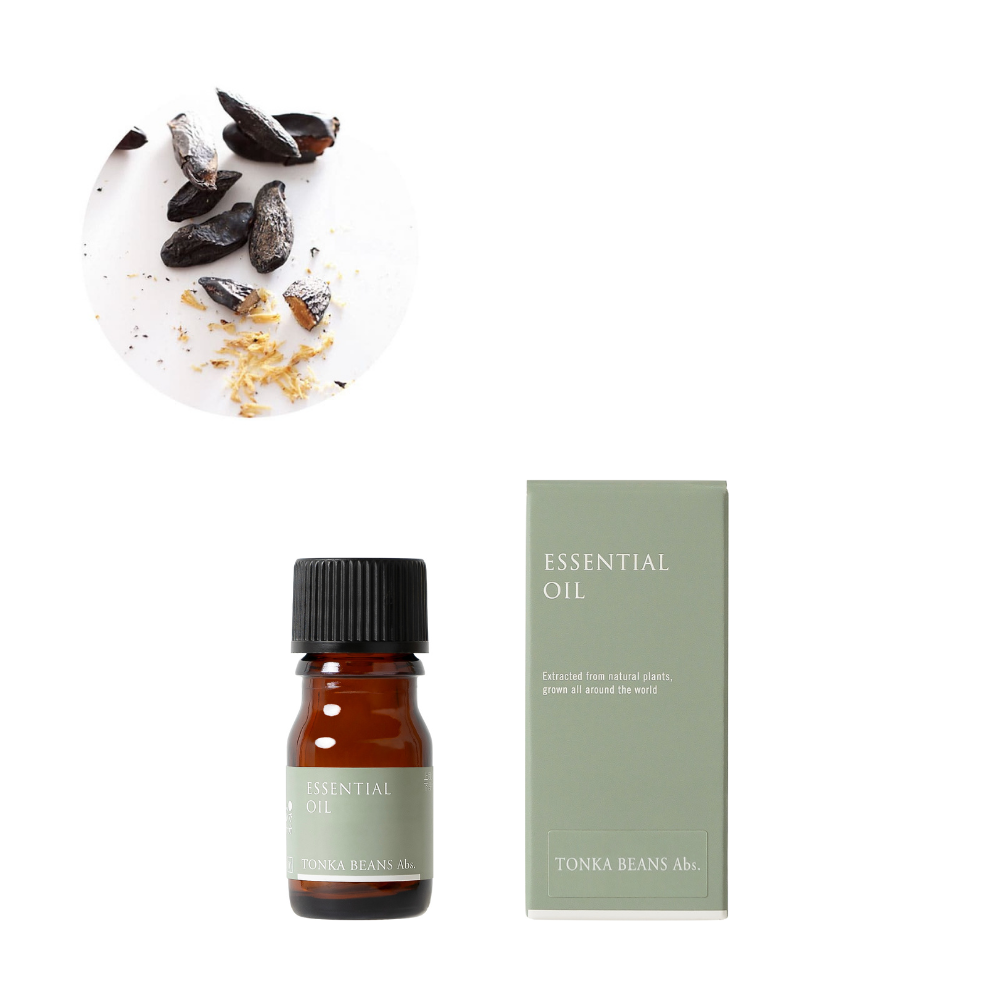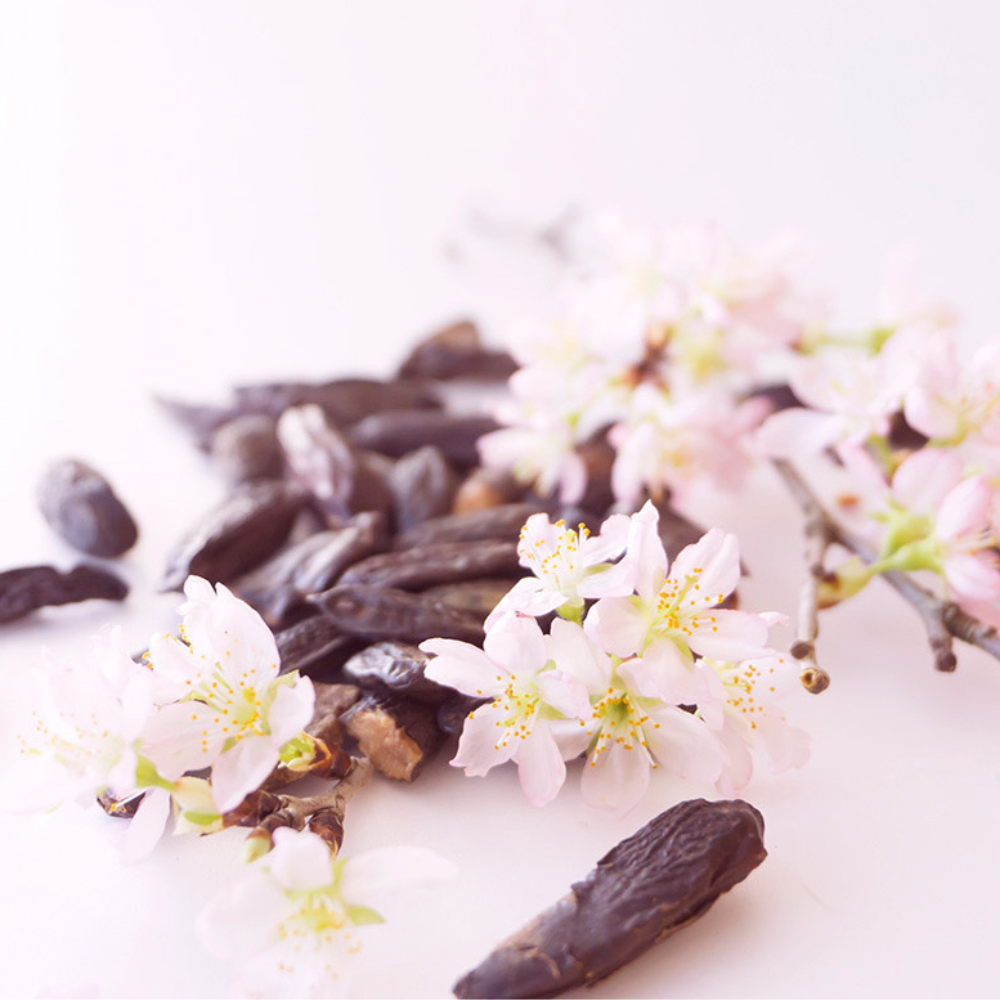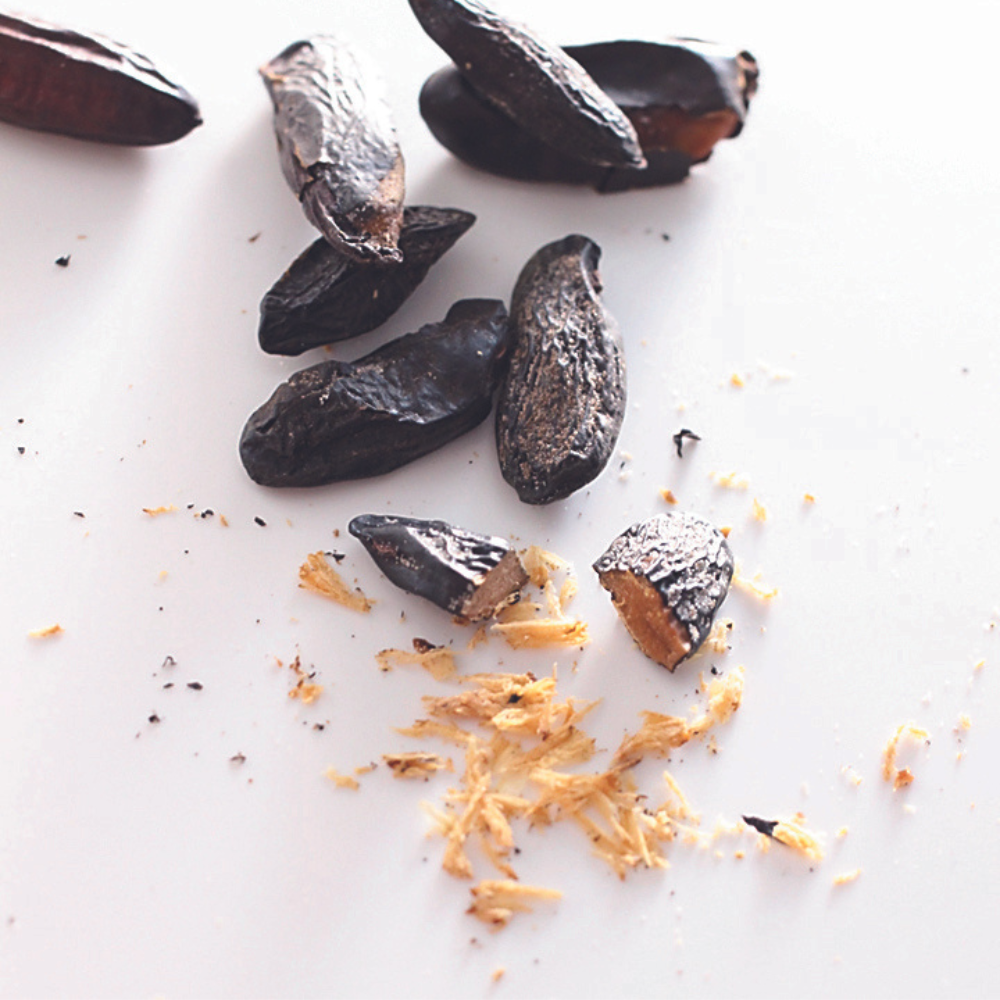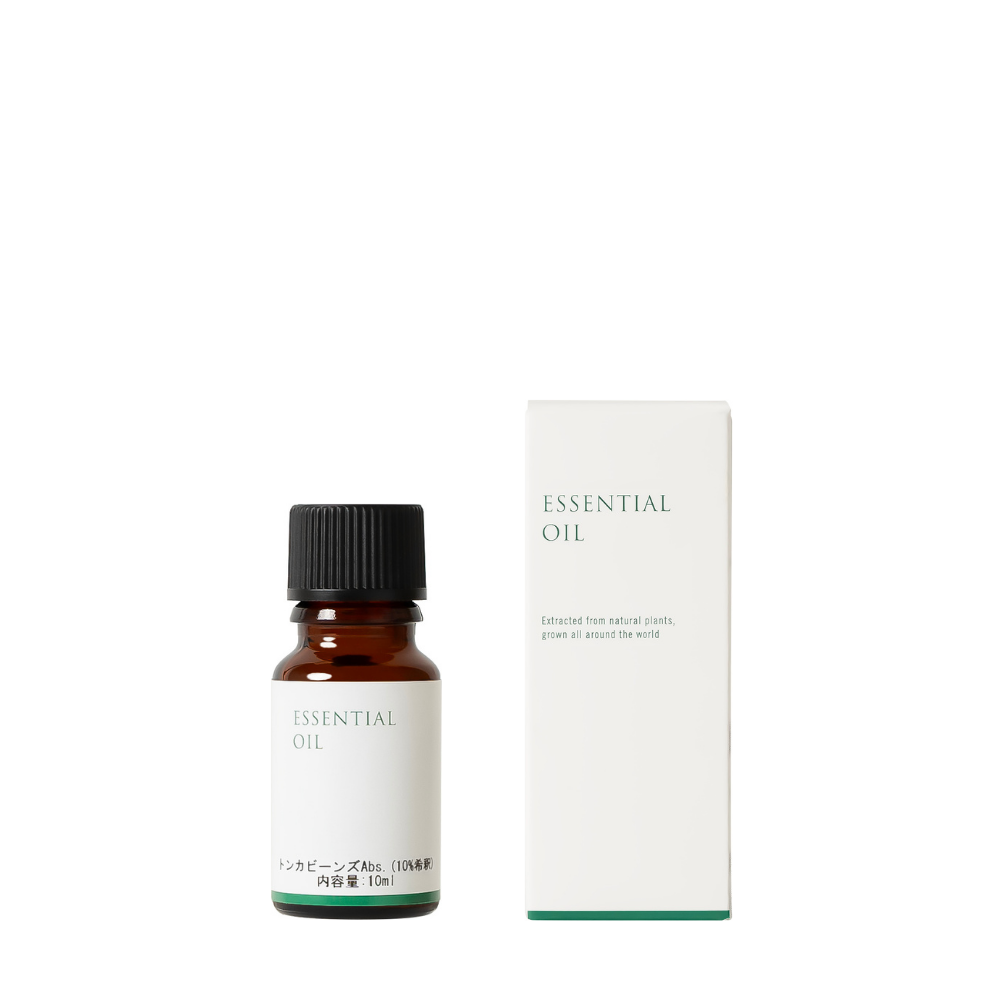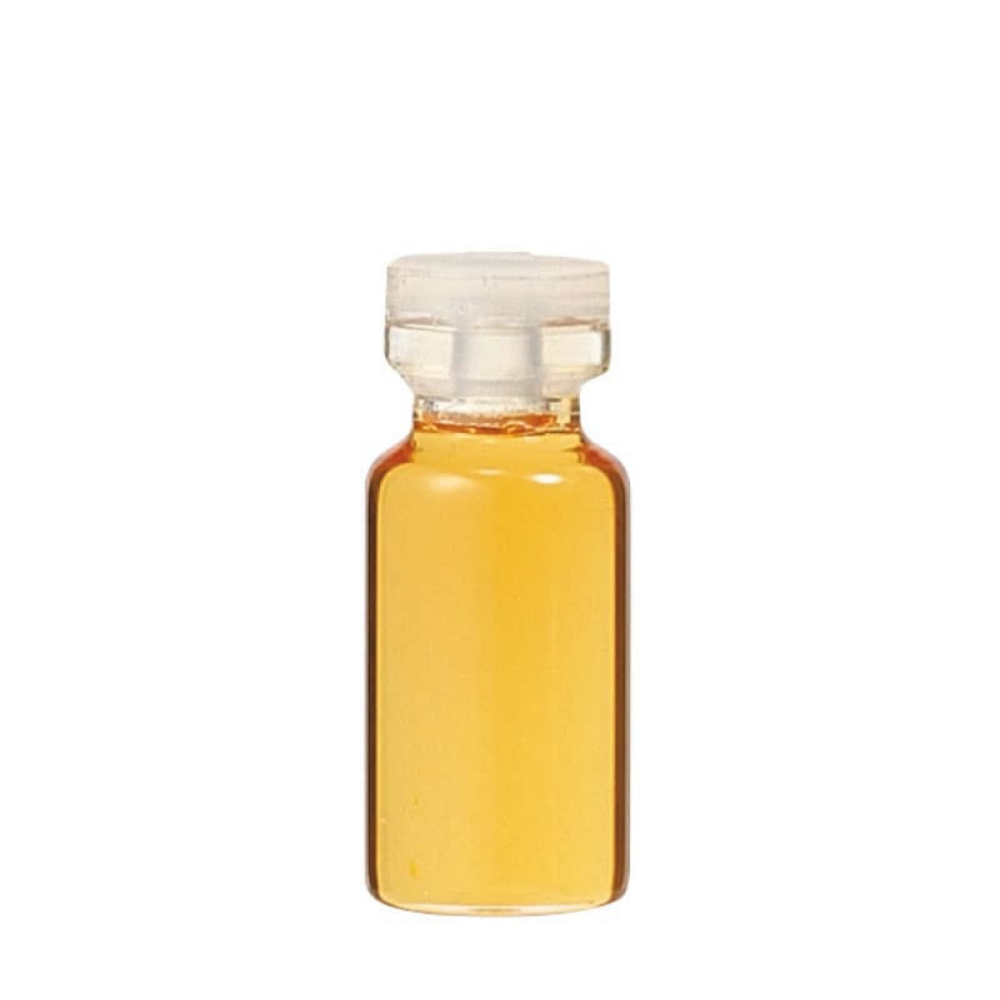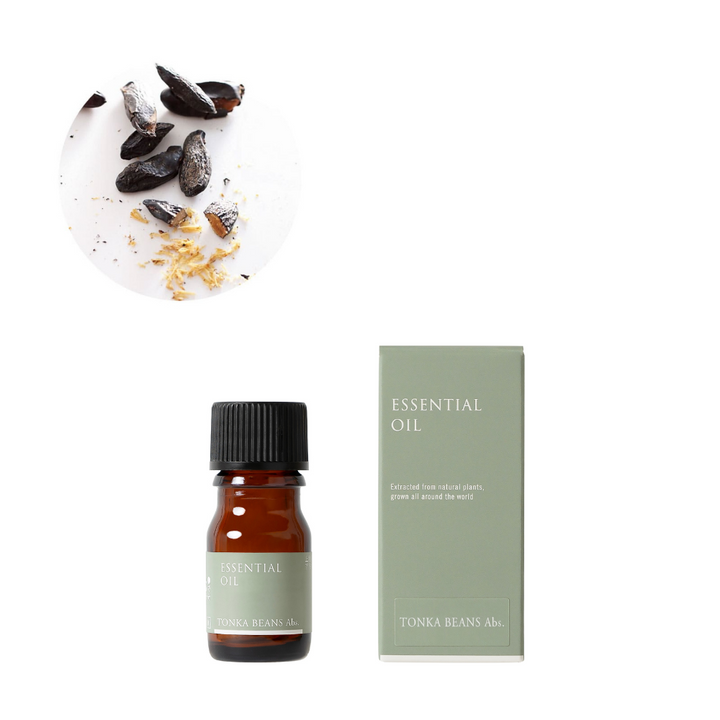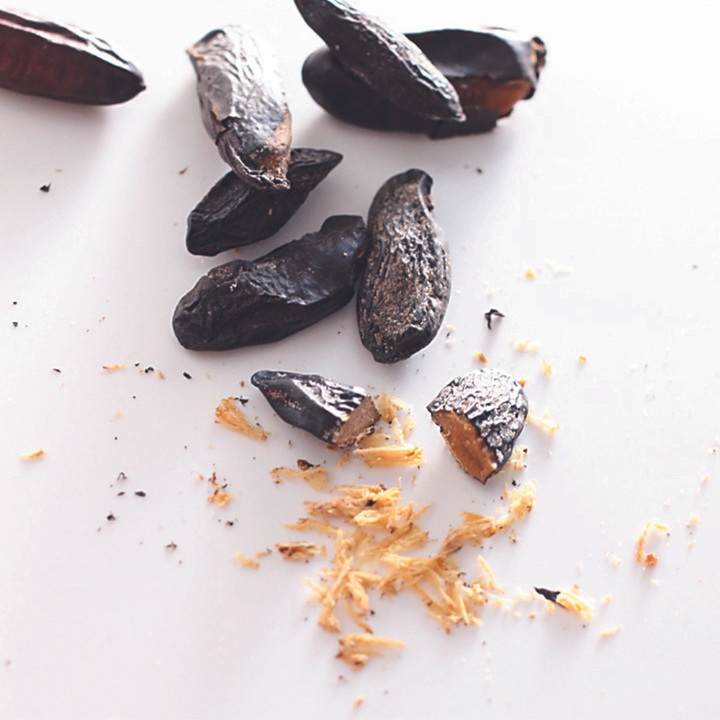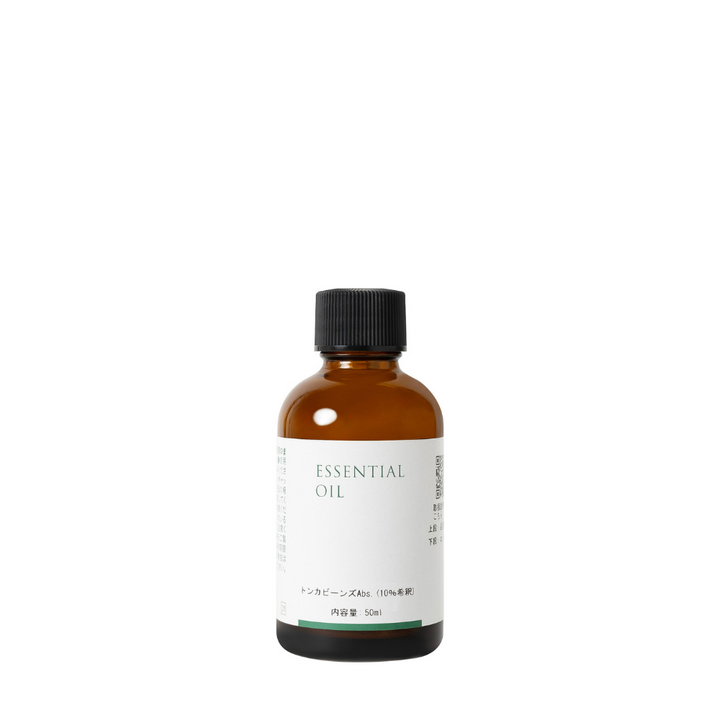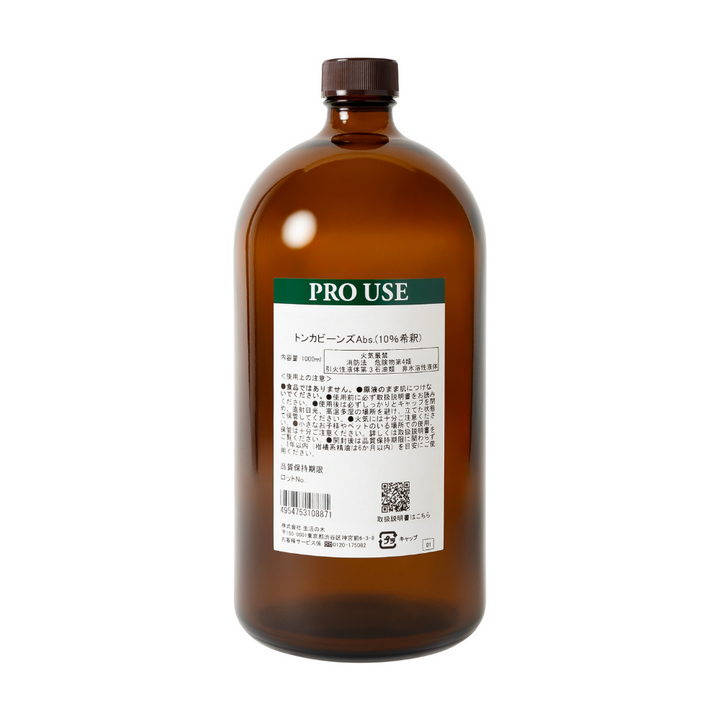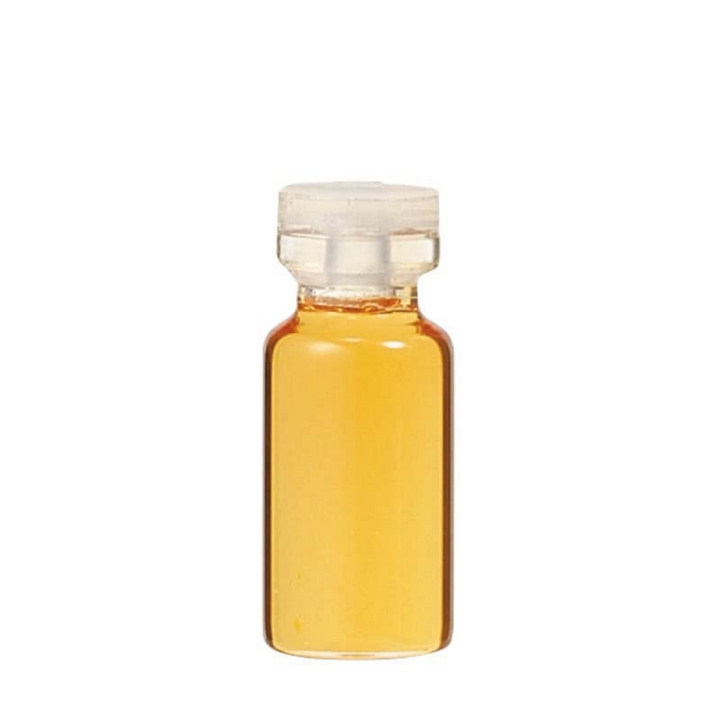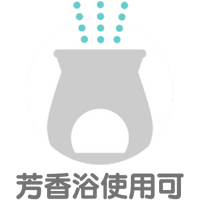■ Tonka bean Abs. with the scent of Sakuramochi
Just say "the smell of sakura mochi" and everyone will know what it is; just like cherry blossoms, this scent may be familiar to most Japanese people.
Similar scents can be found elsewhere, such as the scent of almond tofu and the scent of fujibakama, one of the seven autumn herbs sung about in the Manyoshu.
Apricot kernel is the seed of the apricot, but it has a scent similar to almonds and is sometimes used as a substitute. The common aromatic component is coumarin.
The scent that is familiar in Japan, China, and Asia is also found in Europe, and is provided by the "tonka" bean.
Tonka was especially popular in France, the country that produced it, and high-end perfume makers use it in their formulas.
Coumarin has a structure similar to that of vanilla, and is sometimes used as a substitute for vanilla in the world of fragrance, but it has a depth that is different from vanilla.
How can plants produce such an alluring scent? The scent of flowers is to attract insects that help with pollination, but coumarin is not scented when the flowers are in bloom.
Rather, it seems to be a smell that is released to protect the body and keep pests away.
It's no wonder we are intoxicated by the mysterious scent that is a plant's survival strategy.
■The roots of the raw material plant are in the Amazon. The raw material for Tonka Beans Abs. is the seeds of a tree called "Cumaru," a tall tree that grows in the tropical rainforests of Central America and northern South America and reaches a height of 25 to 30 meters.
Tree of Life's Tonka Bean Abs. are sourced from the Amazon region of Brazil.
The scientific name of the kumaru tree is Dipteryx odorata.
The specific name "odorata" means fragrant in Latin.
It is named after a fragrant plant, just as ylang-ylang essential oil (scientific name: Cananga odorata) and violet essential oil (scientific name: Viola odrata) have the same specific name.
The fruits of the kumaru tree fall naturally from August to September and are picked by their sweet scent.
The fruit is split open and the long, brown seeds, about 3cm long, are removed and dried.
When the surface of the seeds turns black and wrinkled, and eventually crystals of the sweet aromatic component coumarin precipitate, they are called dried tonka beans, or "tonka beans."
In the European sweets industry, dried tonka beans are a popular natural flavouring, alongside vanilla beans, and an essential ingredient in gourmet desserts.
Pastry chefs chop dried tonka beans to flavour creams, chocolates and other confectioneries, and also use them in stollen, a German Christmas pastry.
Although similar in flavor to vanilla beans, tonka beans have a more complex and exotic flavor.
Note: The flavor (food) used is dried tonka beans.
Please note that "Tonka Bean Abs. (10% diluted) essential oil" extracted from dried tonka beans cannot be used for edible purposes.
■Blending advice from Tree of Life perfumerThis essential oil is essential for the image of spring and cherry blossoms.
The soft, fluffy, powdery sweetness, reminiscent of sakura mochi, brings to mind the scent of spring cherry blossoms.
The sweetness envelopes you like melting honey or rich, milky vanilla ice cream.
The sweet aroma of almond powder wafts through the almond tofu.
It has an attractively rich aroma with a variety of sweetness, spicy and fruity notes coexisting together.
This is a fragrance that I would like to use in gourmand creations such as sweet desserts.
Coumarin is also found in trace amounts in lavender, bergamot, and cinnamon bark essential oils, making it a recommended accompaniment to Tonka Bean Abs.
This essential oil has been certified as meeting the labeling standards set by the Japan Aroma Environment Association, a public interest incorporated association.

*Tonka Bean Abs. (10% diluted) is diluted with tasteless and odorless DPG (dipropylene glycol).
*The price of 1000ml may change depending on the season and weather.
We appreciate your understanding.
*The instruction manual has been made available online.
After opening the packaging, please use the QR code on the top flap to access the official Tree of Life website.
Size : Body: Φ23×55mm Box: 30×28×H65mm
Weight Product weight: Approx. 30g
[10ml]
Size : Body: Φ25×62mm Box: 30×28×H75mm
Weight Product weight: Approx. 40g
[50ml]
Size : Body: Φ42×90mm Box: 45×45×H100mm
Weight Product weight: Approx. 149g (including shipping box)
[100ml]
Size : Body: Φ50×110mm Box: 52×52×H113mm
Product weight : Approx. 208g (including shipping box)
[1000ml]
Size : Body: Φ98×220mm Box: 103×103×H232mm
Weight Product weight: Approx. 1765g (including shipping box)
Scientific name : Dipteryx odorata / Fabaceae
Extraction part: Seed
Extraction method: Solvent extraction method
Country of Origin: Brazil
Quality retention/usage guidelines : Unopened: Use within 60 months (5 years) after manufacture, opened: Use within 12 months.
斜めに傾けると外側の穴からオイルが出ます。
エッセンシャルオイル(精油)によっては固まるものもありますので、その場合は湯煎等で温めてからご使用ください。
一滴の目安
生活の木のエッセンシャルオイル3、10、30mlのボトルに使用したドロッパーの一滴は約0.05mlです。

●Do not apply the undiluted solution to your skin.
●Be sure to read the instruction manual before use.
●After use, be sure to close the cap tightly, avoid direct sunlight and high temperatures and humidity, and store upright.
●Please be careful of fire.
Please be careful when using or storing the product in the presence of small children or pets. For details, please refer to the instruction manual.
Once opened, please use within one year (within six months for citrus essential oils) regardless of the shelf life.
User reviews:
・The name you use when posting a review will be made public. We recommend that you use a name that cannot be used to identify you, such as your initials.
・Posts about products will be published in accordance with legal regulations. Please note that any content that cannot be published legally will be kept private.


